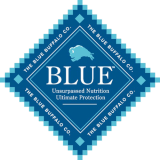Business need
A solid master data model is key to success
In 2019, Sanistål faced the enormous task of upgrading to an advanced SAP solution. With more than 450,000 materials, 6,000 vendors, 35,000 customers, and 36 plants, the company had excellent master data quality but was challenged by the lack of governance in its old ERP system. And Sanistål knew that data was critical for its business processes and insights as well as a prerequisite to adapting quickly and efficiently.
Three years after the go-live, Sanistål has successfully maintained its consistently high data quality while continuously optimizing the foundation created at the very start of the project. According to Louise Blumensaat Fredsøe, Supply Chain, Optimization & Masterdata Manager at Sanistål – who oversaw the migration and validation plus the key task of building an all-new master data function – this is first and foremost the result of Sanistål’s master data strategy and the solid master data model at its core, which GLASSWING helped support.
Our master data model is based on Sanistål’s governance structure, our data model, and our model for migration and validation. Ultimately, these are what creates the foundation for us to be able to stand on, trust, and report high-quality data, as well as ensuring that our IT systems work,” says Louise Blumensaat Fredsøe.
Solution
Fewer resources and higher data quality
Together with NTT DATA, Sanistål defined how its master data should reflect its business processes and the rules to support that – while harmonizing with data from the rest of its complex system landscape. GLASSWING was instrumental in this effort and in Sanistål’s ability to further improve their data says Louise Blumensaat Fredsøe:
The greatest gift GLASSWING gives us is that we can define our master
data based on rules. In that way, NTT DATA gave us the foundation to build from, which is what we continue to do today.
At the same time, because the rules in GLASSWING increase automation in master data management, it reduced the resources needed to handle this highly complex area.
Thanks to the high degree of automation, my team of three people only spend about 40% of our time on master data and can dedicate the rest to supporting new projects in the organization.
Also, rule-based automation yields higher efficiency in the operating organization when creating new system entries, because most fields are filled out automatically, quickly, and error-free. Moreover, GLASSWING’s authorization concept has improved ownership when it comes to master data maintenance – down to individual fields.
Because of the authorization in GLASSWING, data entry and maintenance are now done by those who know and understand our data the best.
Outcomes
Dynamic data supporting rapid development
Over the past three years, Sanistål has further refined its foundation by creating even more rules to define its master data.
Today, our master data match the dynamic nature of the company. This is the result of close collaboration with the rest of the organization to bring focus to the importance of our rules in increasing data quality,” says Louise Blumensaat Fredsøe.
Combined with the commitment to stay close to its master data, this is key to making it a true asset supporting Sanistål’s rapid development and setting it apart from the
competition.
We want to continue being a strong and dynamic partner to our customers, and the consistent high quality of our master data enables us to quickly adapt to their needs today and in the future.”








